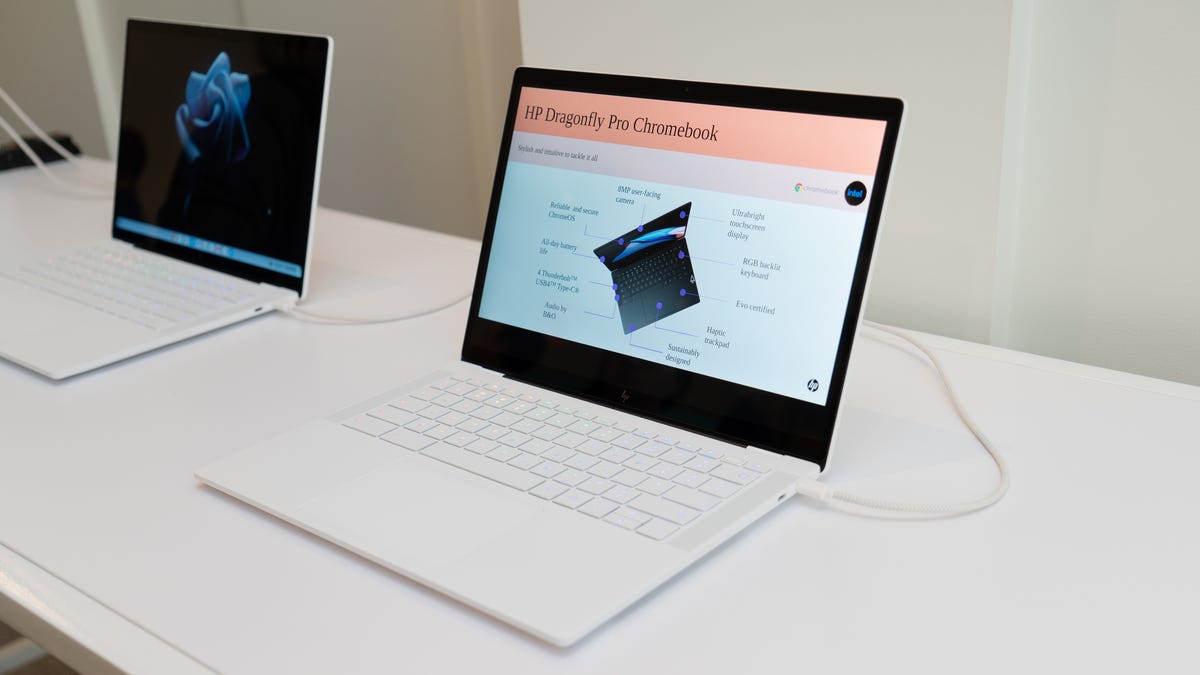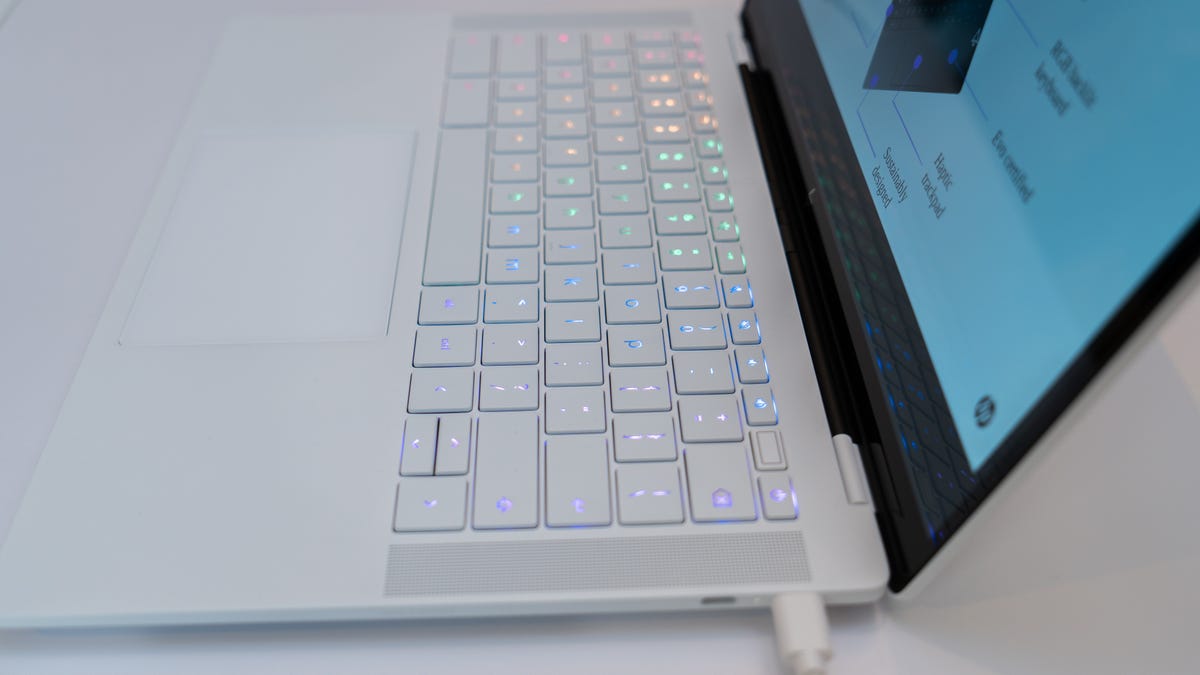HP Dragonfly Pro Chromebook and Laptop Want to Appeal to No-Specs Buyers

Lori Grunin/CNET
HP’s Dragonfly Pro line, which debuted at CES 2023, initially consists of a Windows laptop and a Chromebook. There’s nothing particularly odd about the products themselves, but are still some oddball aspects of the line. It’s the branding that’s confusing.
The Dragonfly line has traditionally been part of HP’s commercial-slash-enterprise laptop line. The Dragonfly Pros seem less Dragonfly and more like a half-step up from HP’s Envy line of consumer-focused clamshells, but at a smaller 14 inches. The Envy laptops are also marketed to more creative types, while the Dragonfly Pros are for mainstream-ish premium buyers. It’s a bit of a fuzzy demographic. One thing the target group has in common, though, is a willingness to pay for convenience.
HP seems to be hoping that you’ll hear “24/7 concierge support” and think “OK. I’ll buy that one.” (And, if you’re like me, that the Dragonfly branding is too cool to waste on enterprise laptops.) Device warranty support will be a month-to-month subscription.
HP says these laptops are “approachable technology” for “the digitally savvy but not tech savvy,” who don’t have the time or inclination to look at specs. The company’s plan is for everything to be standard, so you don’t have to make any hard choices like which screen to pick. Except you do have to make the hard choices about how much memory and storage, or whether you want black or white, so you ultimately do have to think about specs.

A side view of the RGB-lit keyboard of the Dragonfly Pro Chromebook
Lori Grunin/CNET
The hardware does look attractive, and the specs are decent, as long as you’re not looking for an ultraslim or ultralight style. The Windows and Chrome laptops are essentially the same, but with accommodations for the different capabilities of their operating systems. Both laptops have RGB backlit keyboards, which is unusual for a Chromebook and something I really like.
In other words, they have different keyboard shortcut keys; for example, the Windows model has dedicated keys for a control center, camera settings, a custom launcher for the tools you use most frequently and to contact support. The Chromebook just has the support key. And those support keys put you directly in touch with folks specializing in these particular devices, so you don’t have to worry about support reps who are more well-versed in, say, budget or flagship models.
Since the Windows laptop is based on an AMD Ryzen 7 7736U, it doesn’t have the same Thunderbolt 4 connections as the Intel i5-1235U-based Chromebook. The Windows system has three USB-C ports, two of which are “Thunderbolt 3 compatible,” which means you can use them for fast data connections, power delivery, monitors and fast charging, but not for a Thunderbolt hub. It’s an AMD thing.
The Chromebook has better specs than the Windows system, which seems counterintuitive. Most notably, it’s got a higher resolution screen that can hit up to 1,200 nits of brightness compared to 400 nits for the other, but that’s really intended for visibility in direct sunlight not watching movies in HDR. It also has a higher-resolution 8-megapixel webcam, which is useful if you want to zoom in to a head and shoulders view without looking fuzzy.
HP didn’t give us any pricing, but the Dragonfly Pro line isn’t shipping until spring and HP plans to offer up that information closer to availability.